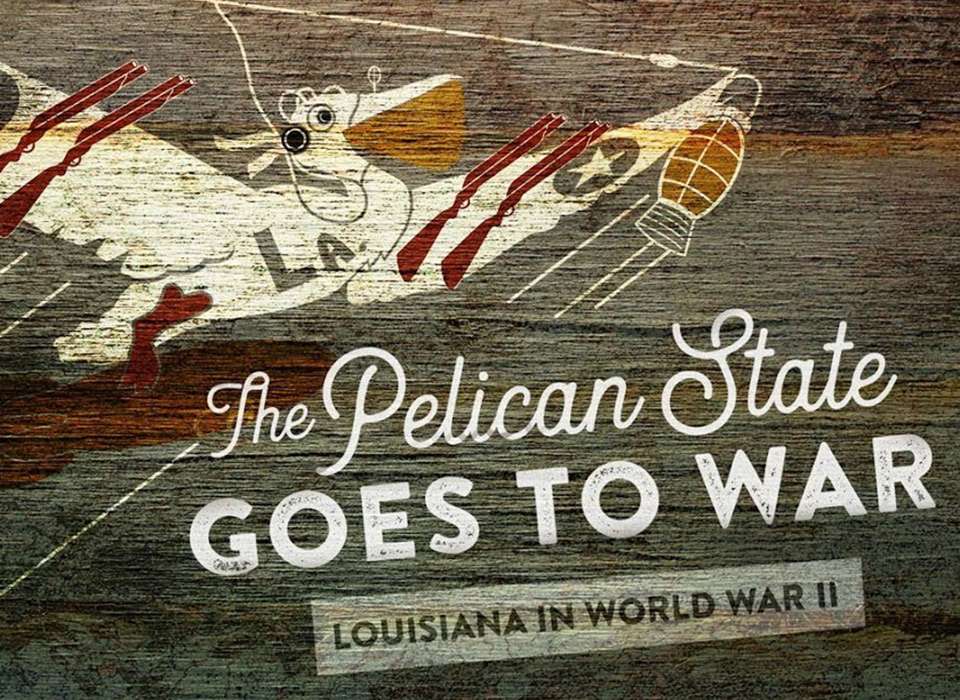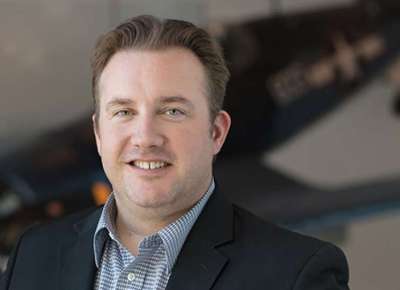Although The National WWII Museum is America’s World War II Museum, it has always been—and will always be—proud of its roots to Louisiana.
Over the years we have hosted many public programs on the “Pelican State” and its important role in the war. We even hosted a special exhibition, that is still popular and travelling across the state, titled “The Pelican State Goes to War: Louisiana in World War II,” which was made possible by the Alta and John Franks Foundation. We hope you enjoy these insights into how Louisiana contributed to victory!
Special Event: Higgins Reunion Day
The first selection is from a truly special day at the Museum, a “family reunion” of sorts that brought together descendants of Andrew Jackson Higgins, who Dwight D. Eisenhower referred to as “the man who won the war for us,” and the owner of Higgins Industries. One of the most common questions we get at the Museum is “why are you in New Orleans?” The answer is that the city was home to Higgins Industries, which employed over 30,000 New Orleanians, who produced over 20,000 landing craft for the war effort. The program begins at the 7:38 mark and lasts roughly 50 minutes.
It features Jerry Strahan, the biographer of Higgins; Jimmy Duckworth, one of the Museum’s “Higgins Boat Volunteers”; Col. Jerry Meyer of the Nebraska National Guard, who was instrumental in getting the Andrew Jackson Higgins National Memorial in Columbus, Nebraska; and Gayle Higgins Jones, Andrew Higgins’ granddaughter, who provided personal reflections from a unique family perspective. The program lasts roughly 50 minutes.
The Pelican State Goes to War Symposium: Uniquely Louisiana
The next two sessions come from our “Pelican State Goes to War” one-day symposium. The first session includes Maureen Honey, PhD, of the University of Nebraska, who spoke on “The Erasure of Women of Color in the WWII Narrative,” and Sharlene Sinegal-DeCuir, PhD, of Xavier University of Louisiana, who spoke on “The Second V: WWII Veterans and the Struggle for Civil Rights.” The session, which was moderated by Gaines Foster, PhD, of Louisiana State University, begins at the 6:55 mark and is roughly 90 minutes.
The afternoon session of our “Pelican State Goes to War” Symposium featured Richard Campanella, PhD, of Tulane University who presented on “Crowded City, New Faces, Uniforms on All Sides: Servicemen in the Streets of New Orleans, 1941-1945.” His talk focused on the city of New Orleans and how the local populace dealt with the changes in their hometown during the war. The program begins at the 2:10 mark and runs roughly 45 minutes.
Special Presentation - Uniquely Louisiana: Wartime Music
We finish our list with the closing event for our “Pelican State Goes to War: Louisiana Goes to War” special exhibition. It was a celebration of sorts. The program kicked off with an hour-long performance by Jourdan Thibodeaux et Les Rodailleurs, a Louisiana Cajun Band. The educational component begins at 1:09:40 with Pete Crean, the Museum’s VP of Education & Access serving as Master of Ceremonies. Charles Chamberlin, PhD, then presents on “Music in World War II” discussing Nazi restrictions on certain types of music, particularly Jazz. Chamberlin discussed music in the United States and how the Office of War Information directed musicians to play certain types of uplifting and patriotic tunes. At the 1:36:50 mark, the New Orleans band, Bon Bon Vivant, plays music of and inspired by the war years.
Jeremy Collins
Jeremy Collins joined The National WWII Museum in 2001 as an intern, and now oversees the institution’s public programming initiatives.
Cite this article:
MLA Citation:
APA Citation:
Chicago Style Citation:






![Max Fuchs, New York City cantor, sings as Rabbi Sydney [sic] Lefkowitz, Richmond, VA, conducts the first Jewish services from Germany.](/sites/default/files/styles/max_650x650/public/2025-10/image1.jpg)


